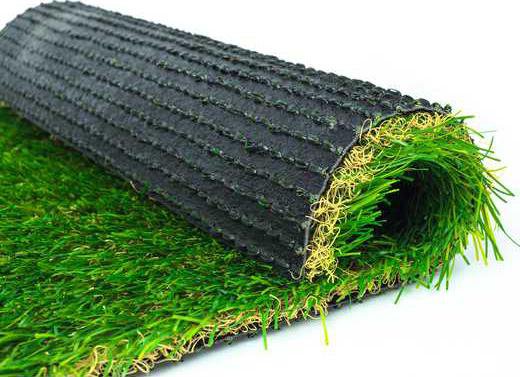It looks beautiful even in winter, repels insects and never needs mowing, but artificial turf used on sports fields is beginning to raise questions about potential health hazards for young athletes.
The Huffington Post reported Thursday that more than 200 athletes who played on synthetic grass have been diagnosed with cancer. One hundred and sixty-six of them are soccer players, said Amy Griffin, a former World Cup champion who has been tracking diagnoses since 2009.
Griffin, who now is a coach for the University of Washington womens soccer team, is a former goalkeeper, and she told The Huffington Post that more than half of the soccer players with cancer also played that position. The goalkeepers spent more time on the ground and were more exposed to crumb rubber the tiny rubber pellets found in artificial turf than their teammates, The Huffington Post's Peter Andrew Hart wrote.
Griffin stressed that her information is anecdotal, compiled from athletes who reached out to her. I am not making any claims about what is happening with these players. But this problem isnt fading. Its going the other way, Griffin told The Huffington Post.
There are other rumbles of concern, not only from environmental groups, but from the government.
In 2009, the EPA said it had a low level of concern about crumb rubber. But this year, the EPA said it could no longer stand by that study which was limited to four crumb-rubber fields, Hart reported.
In February, it launched a new investigation to fill important data and knowledge gaps about artificial turf, which was first used in 1965. The Centers for Disease Control and Prevention and the Consumer Product Safety Commission will also be involved in the study.
The first version of artificial turf was called "Chemgrass," but it was dubbed AstroTurf after it was installed in the Houston Astrodome in 1966.
According to the Synthetic Turf Council, it is used on more than 8,000 sports fields in North America, including half of the National Football League's stadiums.
The council says that artificial turf has been shown to be safe and has a "measurable, positive impact on the environment," saving four to eight billion gallons of water and reducing noxious emissions and grass clippings.
But a Scottish professor said he has identified several carcinogens in artificial soccer fields, Forbes magazine reported in March. If the chemicals escape the rubber crumb, it seems to be fairly clear that there may be some potential risk from some of these substances to sports people," University of Stirling professor Andrew Watterson said.
The Huffington Post reported Thursday that more than 200 athletes who played on synthetic grass have been diagnosed with cancer. One hundred and sixty-six of them are soccer players, said Amy Griffin, a former World Cup champion who has been tracking diagnoses since 2009.
Griffin, who now is a coach for the University of Washington womens soccer team, is a former goalkeeper, and she told The Huffington Post that more than half of the soccer players with cancer also played that position. The goalkeepers spent more time on the ground and were more exposed to crumb rubber the tiny rubber pellets found in artificial turf than their teammates, The Huffington Post's Peter Andrew Hart wrote.
Griffin stressed that her information is anecdotal, compiled from athletes who reached out to her. I am not making any claims about what is happening with these players. But this problem isnt fading. Its going the other way, Griffin told The Huffington Post.
There are other rumbles of concern, not only from environmental groups, but from the government.
In 2009, the EPA said it had a low level of concern about crumb rubber. But this year, the EPA said it could no longer stand by that study which was limited to four crumb-rubber fields, Hart reported.
In February, it launched a new investigation to fill important data and knowledge gaps about artificial turf, which was first used in 1965. The Centers for Disease Control and Prevention and the Consumer Product Safety Commission will also be involved in the study.
The first version of artificial turf was called "Chemgrass," but it was dubbed AstroTurf after it was installed in the Houston Astrodome in 1966.
According to the Synthetic Turf Council, it is used on more than 8,000 sports fields in North America, including half of the National Football League's stadiums.
The council says that artificial turf has been shown to be safe and has a "measurable, positive impact on the environment," saving four to eight billion gallons of water and reducing noxious emissions and grass clippings.
But a Scottish professor said he has identified several carcinogens in artificial soccer fields, Forbes magazine reported in March. If the chemicals escape the rubber crumb, it seems to be fairly clear that there may be some potential risk from some of these substances to sports people," University of Stirling professor Andrew Watterson said.





